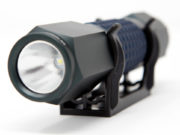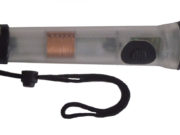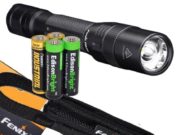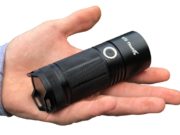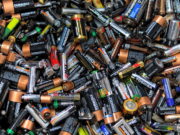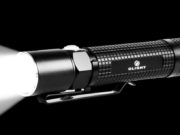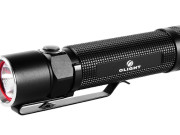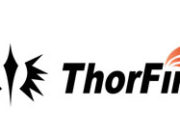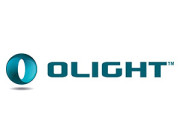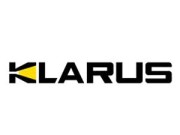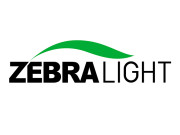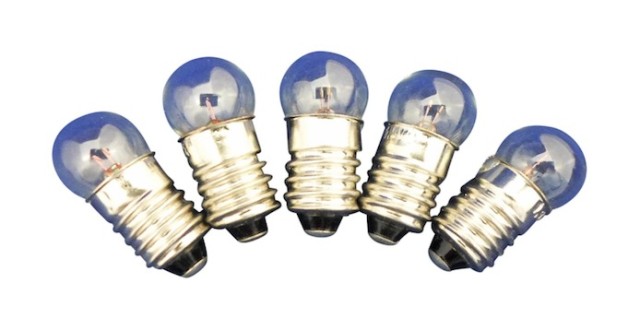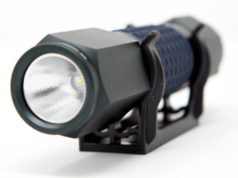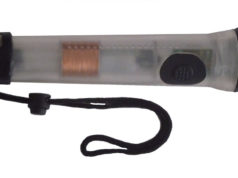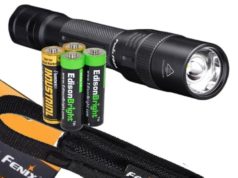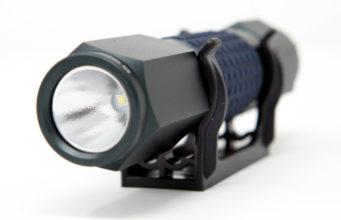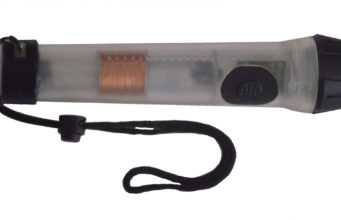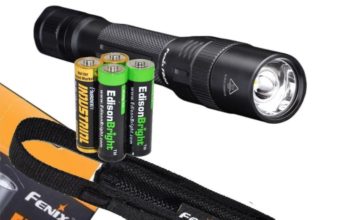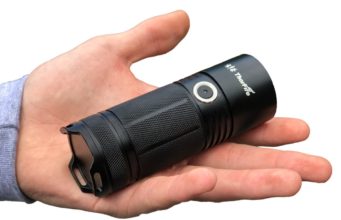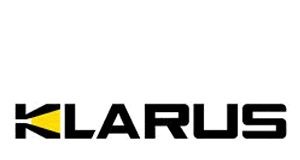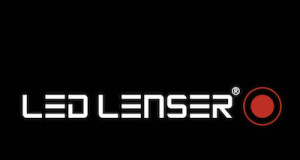The light source in a flashlight can come from either and LED bulb or an incandescent bulb. Most flashlights nowadays use LED bulbs, however some still run on incandescent bulbs.
Incandescent bulbs
We’ve Thomas Edison to thank for the incandescent bulb. They’re the original form of electric lighting and haven’t really changed a great deal since their introduction over 100 years ago.
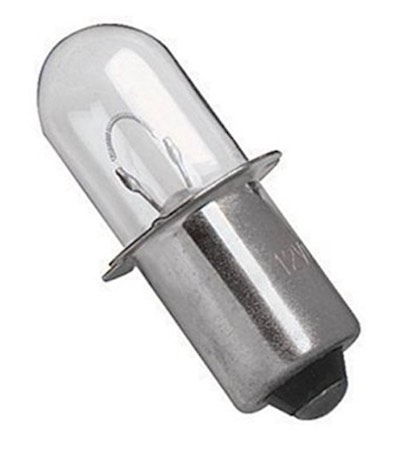 An incandescent bulb produces light when an electric current passes through a wire filament which glows when it reaches a high heat. These bulbs usually contain a stem or glass mount attached to the bulb’s base which allows the electrical contacts to run through the bulb without gas or air leaks.
An incandescent bulb produces light when an electric current passes through a wire filament which glows when it reaches a high heat. These bulbs usually contain a stem or glass mount attached to the bulb’s base which allows the electrical contacts to run through the bulb without gas or air leaks.
Small wires embedded in the stem support the filament or its lead wires. A glass or quartz bulb that has either been evacuated or filled with an inert gas protects the filament from oxidizing and subsequently burning up.
Incandescent bulbs require no external regulating equipment, have a low manufacturing cost (and are therefore cheap to purchase) and work well on both alternating and direct current. They come in a range of sizes, light outputs and voltage ratings – from 1.5 volts to 300 volts.
However, incandescent bulbs are not very efficient with more than 95% of their energy being converted into heat rather than visible light. They also have short life spans and a tendency to emit less light as they age. While they served well for many years, incandescents are no longer considered the best choice for flashlight bulbs.
And to knock another nail in their coffin, from January 1st, 2014, tungsten filament 40- and 60-watt incandescent light bulbs are no longer manufactured in the U.S. This is because they do not meet federal energy-efficiency standards. Until the supplies run out, the old bulbs still will be available on store shelves, alongside the electricity-saving alternatives that will gradually replace them.
Light Emitting Diodes (LEDs)
Light Emitting Diodes (LEDs) are the most commonly used bulbs in flashlights in recent years.
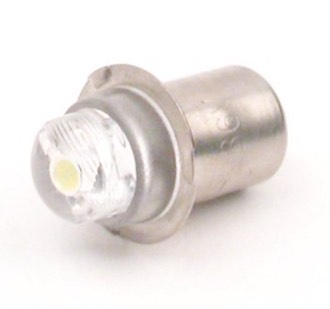 In 1907, Henry Joseph Round discovered that inorganic materials can light up when an electric current is applied. The first visible-spectrum light-emitting-diode was invented in 1962 by Nick Holonyak, Jr. However, these LEDs cost over $200 per diode to produce and they could only be made in the color red until the 1970s.
In 1907, Henry Joseph Round discovered that inorganic materials can light up when an electric current is applied. The first visible-spectrum light-emitting-diode was invented in 1962 by Nick Holonyak, Jr. However, these LEDs cost over $200 per diode to produce and they could only be made in the color red until the 1970s.
In its early years, the LED’s minimal light output meant it was only suitable for use in visual signal applications such as indicators.
Between 1993 and 1995, Shuji Nakamura succeeded in developing blue, green and white LEDs through luminescence conversion. This meant that LEDs could be used in a far wider range of products. LEDs now exist with a luminance efficacy of 250 lumens per watt.
LEDs are semiconductor devices that emit visible light when an electric current passes through them. They consist of two elements of processed materials called P-type semiconductors and N-type semiconductors. They are placed in contact and form a region called the P-N junction.
When electrons cross the junction, photons are produced that become visible through electroluminescence. The exposed semiconductor then emits light.
LEDs are much smaller than light bulbs and use a quarter of as much energy. Putting many LEDs together creates as much light as a bulb and yet remains a lot more energy efficient, using about 6-8 watts of energy per lumen.
They have a low power requirement – they can run on batteries. As well as this, they can function for decades, which all adds up to make them ideal as flashlight bulbs.
LEDs in Flashlights
There are 3 types of LEDs used in flashlights;
- 3mm LEDs are tiny and used in very small lights.
- 5mm LEDs are the most common LEDs and have been in use for some time. Multi 5mm LEDs produce a wide flood of light and last a long time between battery charges. Some examples of this type of light are the Tektite Expedition, the Lightwave 4000 and the Streamlight 4AA LED.
- High Power LEDs are very large and produce lighting that rivals that of incandescent bulbs. Luxeon are the most popular brand and they come in a variety of types and Wattage consumption. Other High Power LEDs are the Cree XR-E and Seoul P4.

